- Fully Automatic Train Operation Control System

- Automatic Fare Collection System

- Intelligentized Train System

- System Integration

- Smart Operation

1、Generic CBTC System
CBTC stands for Communication Based Train Control. Through the signaling system, a metro train can know the curve, ramp and other line conditions and the position of the train in front, and control the train speed in real time to ensure safe, efficient and comfortable train operation. Without the CBTC signaling, metro operations would have to go back to a very primitive state.
The CBTC signaling system developed by UniTTEC, including 6 core products, has passed safety certification by Lloyd's Railway (Asia), and general product and general technology certification by TÜV Rheinland, Germany. It is the first self-developed system that has passed international authoritative certification, and which has been recorded in the history of China's rail transit signaling systems.
Project references:
Metro: Chongqing Line 4 signaling system
The BiTRACON CBTC signaling system independently developed by the company provides a safe, reliable and high-performance overall solution of moving block. The BiTRACON CBTC signaling system has been certified by Lloyd's of Britain and TÜV Rheinland of Germany, and has passed international third-party SIL4 safety certification and independent CRCC development review, reaching an advanced level in China.

2、Interoperable CBTC System
Interoperability refers to cross-line and co-line operation of trains loaded with signaling equipment from different manufacturers in a rail transit network, so as to realize joint communication and traffic among rail transit lines. Simply put, it means metro trains of one line can "understand" signals on another and can move from one line to another.
In 2015, the National Development and Reform Commission officially approved the implementation of the Demonstrative Chongqing Rail Transit Interoperation CBTC Application Project. Four national CBTC system integrators, including UniTTEC, are responsible for the construction of Chongqing Line 4, Line 5, Line 10 and Ring Line respectively, and have realized interoperation of CBTC system trains equipped with different manufacturers on the same line and cross different lines. At the same time, based on this demonstrative project, the group standard T/CAMET 04010-13-2018, Communication Based Train Operation Control System (CBTC) Interoperation Specifications of Urban Rail Transit was compiled. The system completely complies with this specification, adopting a unified system architecture, function allocation, system interface protocols, and can realize interoperation with different line systems.
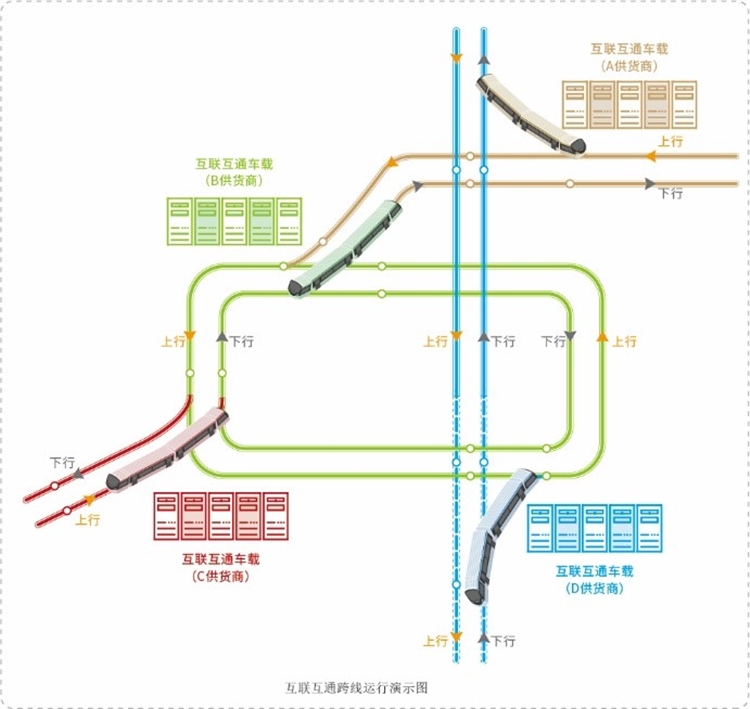
System advantages:
Interoperated and networked operation: Trains can be operated in common corridors within the network to improve utilization rate of lines and equipment.
Vehicle resource sharing: Vehicle resources can be shared within the network, which can reduce the number of standby vehicles and which can optimize preventive maintenance plans.
Operator sharing: The interoperation system follows a unified man-machine interface standard, operation standard and application function standard, and dispatchers and crew of different lines can be deployed between lines on the basis of appropriate training.

Typical project: Demonstrative Chongqing Line 4 Interoperation Project
The demonstrative CBTC system project of Chongqing rail transit interoperation is the first interoperation project in China, which covers four signaling integrators, three safety certification agencies, two LTE manufacturers and backbone network manufacturers, and involves interface opening and standard formulation of signaling and LTE manufacturers. It also involves scenario modification and test workload of Chongqing Line 4, Line 5, Line 10 and Ring Line, which is doubled exponentially.
With the support and under leadership of the National Development and Reform Commission and China Urban Rail Transit Association, Chongqing Rail Transit (Group) Co., Ltd. and four signal manufacturers including UniTTEC have overcome the worldwide difficult problem of CBTC interoperation by using fully self-developed signaling technology, and developed train control system equipment that meets the standard interface of interoperation. The goal of co-line and cross-line operation of trains loaded with signaling equipment from different manufacturers is achieved. It has made an important contribution to promoting localizing signaling systems and realizing networked operation and resource sharing of urban rail transit in China.

3、Unattended Train Operation
The unmanned driving system, which is completely independently developed by UniTTEC, has a high level of automation and is a new generation of train control system for urban rail transit, realizing fully automatic and unmanned driving of rail transit trains. The UTO/DTO function of the BiTRACON CBTC system is a scientific and technological achievement approved by the Ministry of Science and Technology of China. The scientific and technological achievement has been evaluated successfully by experts and accepted by the Ministry of Science and Technology, and the evaluation experts agree unanimously that the achievement has reached an internationally advanced level.
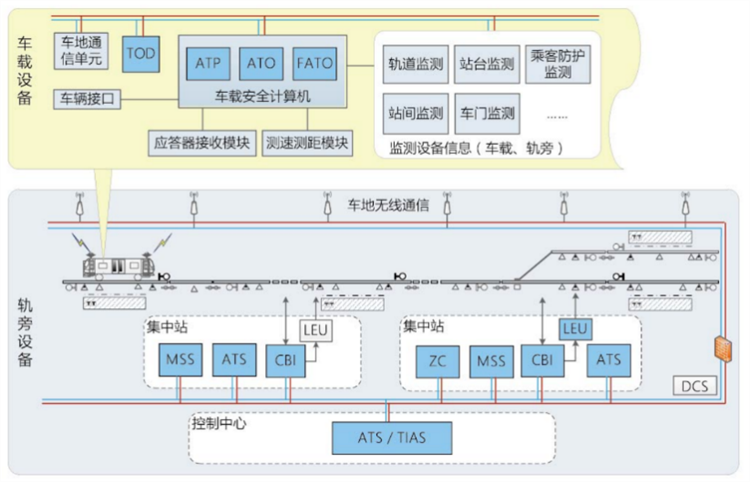
System advantages:
The BiTRACON automatic driving system combines the current domestic and advanced European technologies and safety concepts, with multi-dimensional heterogeneous safety strategies and measures;
The software and hardware of the system are of modular design. By superimposing hardware supporting GOA4 level function application (such as FAO module and obstacle detection module, etc.) and software functional modules supporting GOA4 level, the functions of GOA2 level can be extended to GOA4 level automatic operation.
The vehicle and ground are designed on the same platform, with fewer board types using 3U boards, which have the characteristics of miniaturization and low power consumption. The integrated design of software and hardware of the system is easy to expand and extend.
The BiTRACON fully automated driving system supports not only safe and efficient single-line operation, but also possible expansion of interoperation in future line networks.
Undertaken projects:
Unattended driving in Ningbo Line 5
Unattended driving in Zhengzhou Line 12
4、Train Autonomous Circumambulation System (TACS)
The Train Autonomous Circumambulation System (TACS) is a system which can realize independent train dispatching and operation control through direct commanding and information interaction between trains and between trains and trackside equipment.
The system adopts a more streamlined system architecture design with train as the center and a driving safety protection strategy with resource algorithm as the core, realizing independent communication between trains, automatic train tracking and automatic operation protection. It has characteristics of intelligent operation control and streamlined trackside equipment, etc.
Compared with traditional train control systems, the TACS system adopts the operation strategy of minimum resource occupation, which helps to shorten the train operation headway, improve rail transit line operation efficiency, greatly reduce trackside control equipment, and effectively decrease costs of system construction and operation & maintenance.
System advantages:
Flexible route protection: The route takes the train as the starting point to establish a safe route in any direction, providing a more flexible and diversified transportation organization scheme for the operation.

Efficient turnout use: Through a resource algorithm, turnouts are used efficiently, greatly improving turnback efficiency.


Project participation: Demonstrative Train Autonomous Circumambulation Project
The National Demonstrative Train Autonomous Circumambulation System (TACS) Project of Qingdao Metro Line 6 was officially approved in 2016 with strong support from the National Development and Reform Commission (NDRC), China Urban Rail Transit Association and relevant leaders of Qingdao Development and Reform Commission.
As the general leader of the project, Qingdao Metro led all project units to cooperate with each other in sincerity and to carry out a series of activities related to system scheme design, demonstration, test line testing and so on. At present, the project is progressing smoothly.
In 2018, UniTTEC joined the Demonstrative Train Autonomous Circumambulation System (TACS) Project as a new member. As a mainstream signaling system integrator, UniTTEC participated in the architecture optimization, functional allocation and interoperation interface design of the TACS train control system, further optimizing the relevant system design and improving the completeness of the system. The complete system provided by our company has passed the dynamic train test and interoperation test of the southern section of Qingdao Line 1 in April of 2021.
5、BiLOCKSTAR EWS Fully Electronic Interlocking System
The BILOCKSTAR*EWS fully electronic interlocking system provided by UniTTEC Co., Ltd., with completely independent intellectual property rights adopts such safety techniques as a 2-o-o-2 vital architecture of dual hot-standby redundancy, independent BIST built-in safety detection, 2-o-o-2 dual-channel diversity design, dynamic and static back-collection, code collection and so on. With hot-swap, board level redundancy due to dual system application, strong system expansibility, high compatibility, support of online monitoring and other characteristics, its safety integrity level is SIL4, suitable for signaling control of metro main lines, depots, stabling yards and for trunk railway.
The system has been successfully applied in projects including Nanjing Hexi Line, Qilin Line, Huai’an Tram Line 1 systems, and Hangzhou Metro Line 9, etc. The BILOCKSTAR*EWS fully electronic interlocking systems, which UniTTEC has put into application in some of the above urban rail transit lines, have been applied safely and stably for more than 4 years in open air environment of urban ground roads, with very high safety and reliability.
System features:
Flat system architecture: Based on integrated electronic executive unit functions of the BiLOCKSTAR computer interlocking system; significantly reducing trackside equipment and peripheral cables; convenient maintenance; greatly decreasing project construction cycles and operation & maintenance costs.
Safety design: 2-o-o-2 vital architecture of redundancy, independent BIST built-in safety detection technology, dynamic and static back-collection technology, code collection technology, etc.
System features: hot swap, high integration, strong scalability, high compatibility, support of online monitoring, easy maintenance, etc.
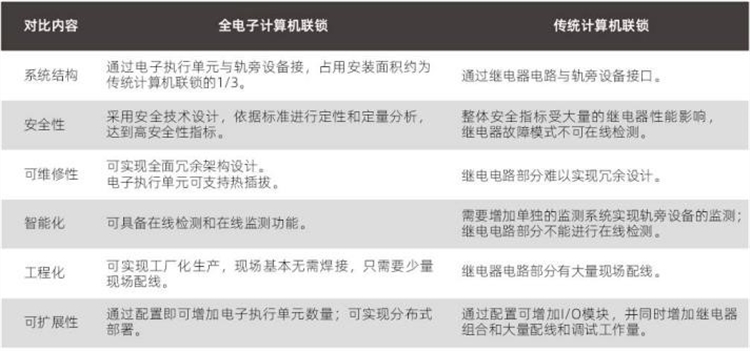
1、Automatic Fare Collection (AFC) and Automatic Clearing Center (ACC)
In the professional metro subsystems, the Automatic Fare Collection (AFC system for short) system, is a "window" system for rail transit, which is of a five-layer structure divided into tickets, station terminal equipment (SLE), computer system (SC), line central computer (LCC) system, rail transportation clearing management center computer system (ACC). Its main function is to provide passengers with fast and easy ticket purchase services, and it can also complete the automatic management of the whole process of metro operation, such as ticket making, ticket selling, ticket checking, finance, statistical analysis, data mining, and decision support and so on. It provides passengers with not only automatic ticket selling and checking services but also reliable data for scientific management of rail transit operating companies.
UniTTEC entered the field of metro AFC in 2007 and quickly gained recognition in the industry for its powerful software, integration and innovation capabilities relying on the profound computer discipline background of Zhejiang University. UniTTEC is famous for its leading software strength in the industry, and its capability maturity has reached the highest international CMMI5 standard. It owns AFC and ACC systems with completely independent intellectual property rights, and has exported dozens of patents, which have been highly appraised by experts in the industry.
UniTTEC regards customer appraisal as lifeblood and has a high reputation for its products and services in the industry. Relying on its technical strength and innovative culture, UniTTEC has always been in the forefront of the industry in terms of innovation and has made due contributions to the AFC industry in terms of architecture optimization, mobile payment, biometrics and other aspects. In 2018, China Urban Rail Transit Association announced winners of "China Urban Rail Transit Association Science and Technology Progress Award". The "Internet-based Automatic Fare Collection System for Urban Rail Transit" of UniTTEC stood out from many applications and won the third prize, which is the only award-winning project in the field of automatic fare collection systems.
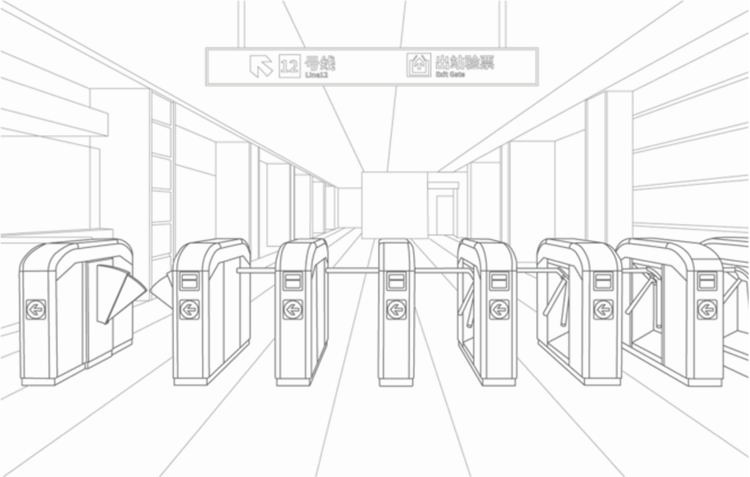
UniTTEC owns the metro AFC system with completely independent intellectual property rights, which can support single line or multi-line network operation and meet operation data mining, decision support and other management needs. In the face of Internet mobile payment, biometrics and cloud computing technologies, the AFC system of UniTTEC has formed a perfect solution through system expansion and gradually promoted its application, providing passengers and customers with the most advanced payment methods and more intelligent operation services.
With strong technical strength and reputation, at present, the UniTTEC AFC system has been widely used in 42 AFC projects, 5 ACC projects, 4 MLC projects, 2 diversified payment platform projects, serving totally over 800 stations in 17 cities including Nanjing, Hangzhou, Suzhou, Ningbo, Wuhan, Tianjin, Nanchang, Chengdu, Nanning, Shijiazhuang, Foshan, Shaoxing, Wenzhou, Xuzhou, Nantong, Huai’an, and Huangshi.

Engineering reference
Mobile payment in Hangzhou Metro
In order to adapt to the new trend of electronic payment in the background of "Internet +", meet diversified ticket purchasing needs of passengers, and effectively alleviate the problem of ticket-purchase queuing and change exchange with passengers, in 2015, UniTTEC, UnionPay and Alipay, together with Hangzhou Metro, started to study the metro electronic ticket purchasing function. In 2016, UniTTEC formed a strong union with Hangzhou Metro, Zhejiang UnionPay and Alipay and created "Smart Metro" to realize electronic payment for ticket purchase and receipt; in 2017, UniTTEC continued its efforts and developed a more convenient way of mobile payment and direct gate passage. The transaction of direct gate passage based on scanning of the Quick Response Codes and flashing payment by UnionPay and via use of mobile media spares the need of passengers to buy a material ticket and effectively alleviates congestion of ticket-purchase queuing, improves efficiency of entering and leaving of stations, and optimizes train-riding experience for all the citizens. The payment system was launched for trial operation in the whole metro line network on December 27th, 2017.
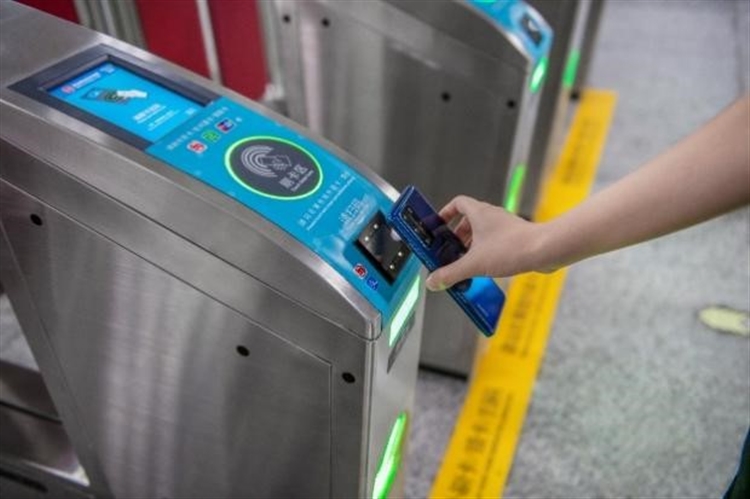
The first cross-city clearing system in China
The Interoperation Project of Hangzhou Metro, Shaoxing Rail Transit and Hangzhou-Haining Intercity Railway is the first project in China to realize cross-city clearance docking and transfer in interoperation payment areas. Relying on strong scientific and technological basis of Zhejiang University and utilizing convenience in construction of electronic payment platforms, ACC systems, and several lines of AFC systems for Hangzhou Metro, learning from rich experience of upgrading and retrofitting of the whole network of Hangzhou Metro for multiple times, UniTTEC gives full play to the localization service advantages, keeps close cooperation, takes complementary advantages, welcomes diverse merits, overcomes numerous difficulties, and realizes interoperation of various transaction tickets in three regions and accomplishes clearing according to the different fare systems and operational entities in the three areas.
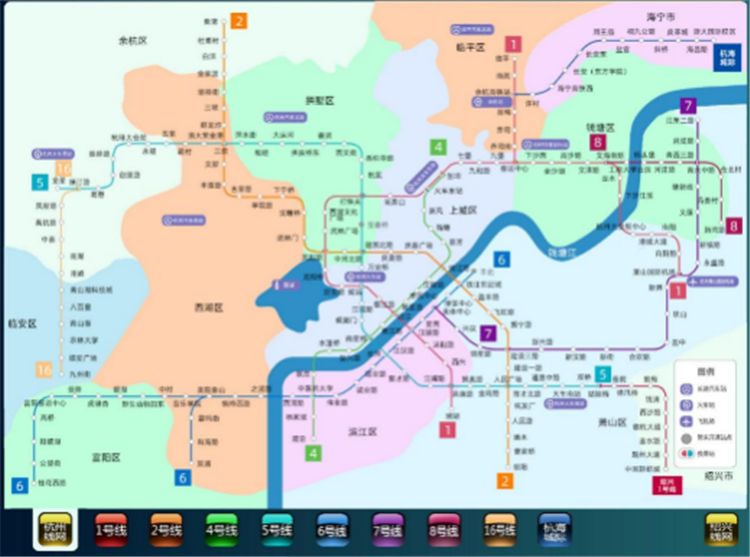
2、Multi-line Center (MLC) of Shared AFC System
The Multi-line Center (MLC) system refers to the line center system shared by multiple lines operated by the same operator in online network operation. It is the core of a multi-line AFC system. The lines under control of the operator can realize network operation requirements of rail transit through the same MLC and ACC interface. The system can be extended upward to realize functions of the ACC and diversified payment platforms, etc. of the line network. It is suitable for the case in which the number of planned urban rail transit lines is moderate and no less than two lines are being built in the same period in the initial stage of construction. In particular, it may substantially minimize the investment costs on the line center level.
The MLC can integrate LC data of multiple lines and then interface with the ACC, or directly with the ACC without any LC by directly taking over the SCs of various lines. The MLC can also integrate upward the ACC clearing function to replace the traditional ACC.
The MLC system based on a cloud platform features high resource utilization rates, resilient and expansible cloud servers, virtual private cloud, cloud server backup services, unified safe & convenient maintenance etc., and may improve resource utilization rates, save preliminary investment, save human resource costs, increase safety of the whole platform, and enhance business service reliability.

Application Scenarios
1、Intelligent Driving Assistance System
When the signaling system fails, it provides functions such as precise train location, signal aspect identification and obstacle detection downstream the train.
Based on devices such as video, laser and speed-measuring units, it provides an independent positioning scheme in case of signaling system failure. At the same time, it offers functions of identifying signaling lamps, turnouts, obstacles in front of the vehicle, in addition to driver status detection, etc.; high reliability of the system: customized sensors are used to provide ideal effects in low-illumination and high-speed scenarios.

Application:
The company undertakes the research of the sub-topic titled The Intelligent Monitoring and Precaution System of Train Operation Environment and the Intelligent Unmanned Driving System of the National 12th Five-Year Scientific and Technological Support Program project "Key Technology and Equipment Development of Next-generation Urban Rail Transit Trains".
Ningbo Metro Line 5.
2、Intelligent Train Monitoring and Precaution System
Through real-time monitoring and prediction of its operational development trend, intelligent train detection, intelligent diagnosis and decision-making can be realized, and technical support for intelligent vehicle operation and maintenance provided. Through such technologies as sensing, data acquisition and processing, and information, the current status of train operation can be diagnosed and the operation process of key systems (such as the running gear system, the pantograph) monitored and precaution made.
3、Passenger Information System (PIS)
Relying on multimedia network technology and taking computer system as the core, the comprehensive multimedia information system enables passengers to promptly and accurately understand train operation information and public media information by setting up display terminals at station halls, platforms, entrances and exits, and on trains. It has the function of monitoring and controlling the station, information release and monitoring of operational status (occupation state) of each information release area of the PIS and fault alarms of PIS equipment.
Digital broadcasting, travel display, multimedia broadcast, video monitoring, free WIFI coverage and other services are provided for vehicles through the on-board broadcasting subsystem, video monitoring subsystem and film and television entertainment subsystem to improve passengers' ride experience. At present, it has been applied in Hangzhou Line 9, Hangzhou Line 1 phase III, Shanghai Lingang Medium Load T1 Line, Chongqing Line 2 train-addition, Shanghai Yipeng Skytrain Project and the next-generation metro project.
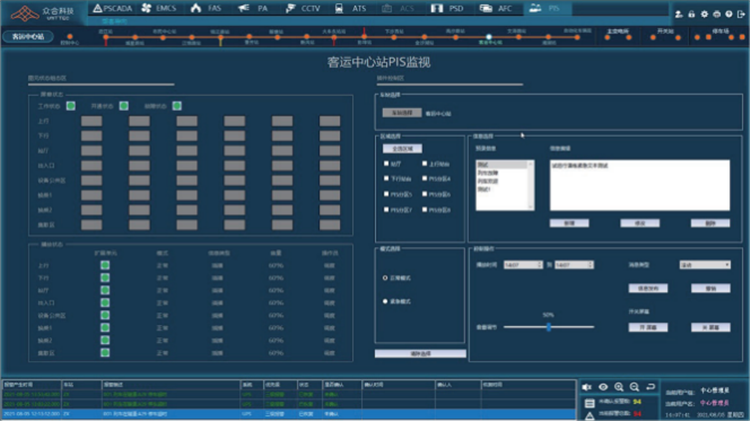
4、On-the-way Management System of Cargo Information
The company participated in the development of the first 250 km/h cargo EMU by providing a supportive cargo information system: with Ultra Wide Band (UWB) communication technology, RFID technology, mobile data network and Beidou satellite navigation technology, etc., cargo may be precisely identified, accurately positioned, and goods information can be exchanged between trains and the ground.
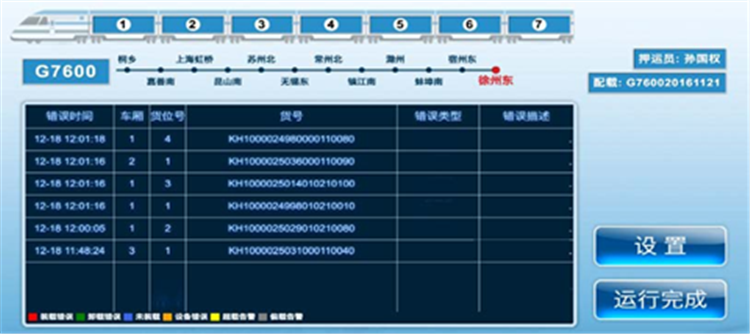
Cargo Information Management System for 250 kph EMUs
5、High-speed Vehicle-ground Dump System
Based on 5G technology, it realizes high-speed on-board data uploading at fixed points and supports distributed upload and storage of train data, featuring ultra-high-speed, fully automatic and distributed data uploading and storage. The dump channel can reach up to 1.5 Gbps. The vehicle dump data synchronization, vehicle-ground data transmission, data storage management, and external services can all be completed automatically. Synchronized multiple-dump-points operation, distributed data storage, and unified user access to complete data are supported. At present, China National Energy Group, CRRC and other customers have achieved batch application with a total of 120 sets of the system equipped onboard. The commercial application have lasted two years successfully.
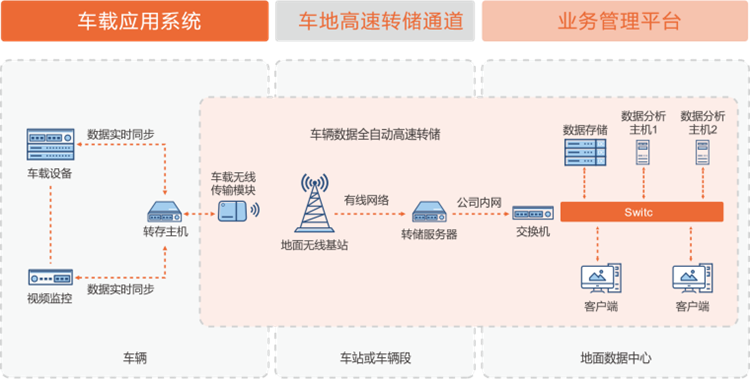
The unified weak-current integration platform is centered on traffic command and integrates deeply the train automatic supervision system, environment & equipment health system, power supervision system and safety door system. It is interconnected with other weak-current systems to realize system integration management of digitalized information. It can be used in various standards of rail transportation like light rail transit including suspended aerial rail and tram, etc.; municipal line; intercity railway; metro; and so on.
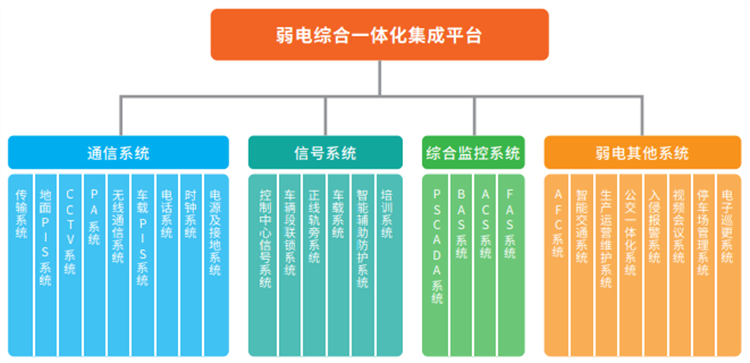
Project reference:
Case 1: Huangshi Modern Tram Troject Phase I
The first phase of Huangshi Modern Tram Project in Hubei has a total length of 26.900 km (double-track of 25.447 km, single-loop of 2.905 km), including a 21.507 km ground section, a 3.403 km elevated section and a 1.990 km tunnel section. There are 30 stations (including 1 reserved station) in the whole line, of which 2 are elevated stations and the rest ground stations. It is expected to open in October 2022. There is one vehicle base for the whole line, which is located at the northeastern corner of Jinshan Avenue - Baihua Road, covering an area of about 13.5 hectares.
What the project adopts is the deep integrated system of TIAS as a result of independent research and development of UniTTEC, which combines such subsystems as signaling, communication, AFC, intelligent transportation, weak current of depot construction, production dispatching management, mass transit integration, etc. making use of advanced technologies including big data cloud platform, non-contact obstacle detection, intelligent crossing optimization, fully electronic and centralized control of interlocking areas, and so on.
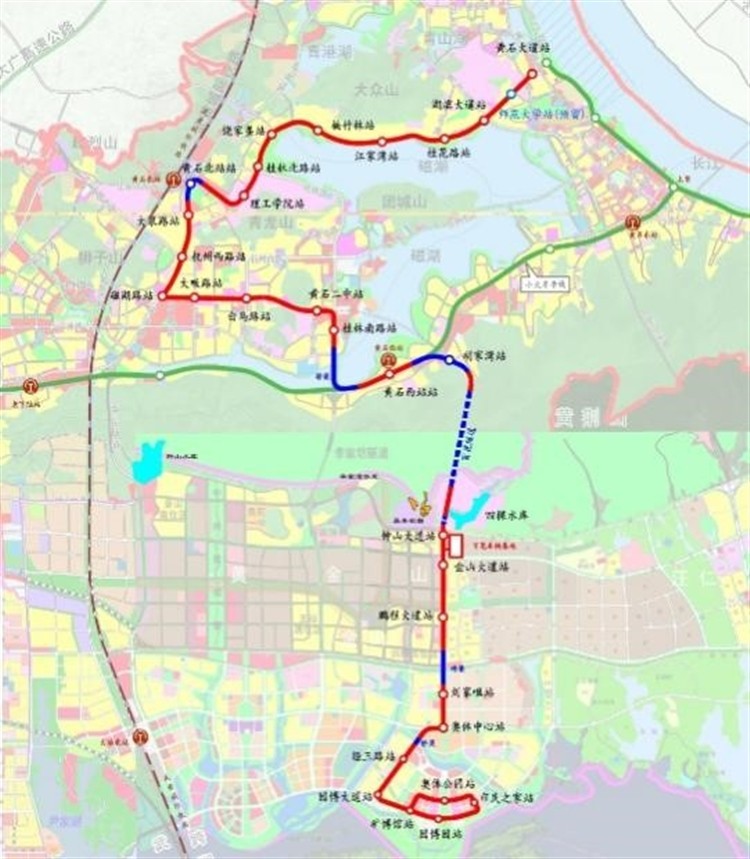
Case 2: Yipeng Aerial Rail Test Line at Baoshan
The Demonstrative Project of Yipeng Baoshan Intelligent Suspended Monorail Aerial Rail System includes one set of intelligent suspended monorail aerial rail line system (first section to be launched of 0.94 km), two R & D centers (digitalization center and lightweight center) and one intelligent automatic laser welding factory. Continuous research and development of intelligent suspended monorail system is constantly conducted based on mature German full-lifecycle system combined with 5G communication and big data artificial intelligence management. The test line is located at No. 155 First Fulian Road, Baoshan District, Shanghai, with one control center, one maintenance workshop, two stations and one operating train (of two-car formation). It is scheduled to open in July 2022. The signaling system adopts a mode of vehicle-vehicle communication (TACS) + unmanned driving (UTO).
This project uses the TIAS platform of deep weak-current integration independently developed by UniTTEC, which integrates various weak-current systems including the signaling system, the integrated supervision and control system, and the communication system. Advanced technologies are applied such as vehicle-vehicle communication without a backup mode and with weakened wayside equipment configuration, unmanned driving, intelligent dispatching, flexible train formation, vehicle-signaling control fusion, platform equipment fusion, and non-contact obstacle detection.
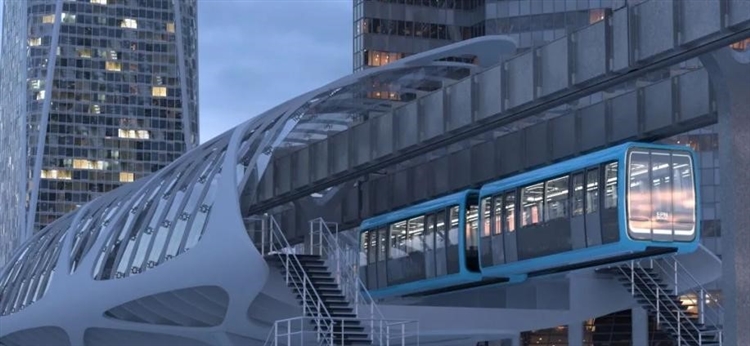
Case 3: Huai’an Tram Line 1
Huai’an Modern Tram Line 1 Project is the longest modern tram line without a contact line in the world, the longest modern tram line of super-capacitor vehicles in China, and the first modern tram line truly running in a central business district of a city in China.
As a signaling system integrator, UniTTEC provides an overall solution of BiTRACON® tram signaling system for this project. The system has full independent intellectual property rights, including main line switch control subsystem, level crossing signaling control subsystem, central ATS subsystem, carborne signaling subsystem, depot interlocking subsystem, etc. The line operates for 20.07 km and has 23 stations, all of which are ground stations.
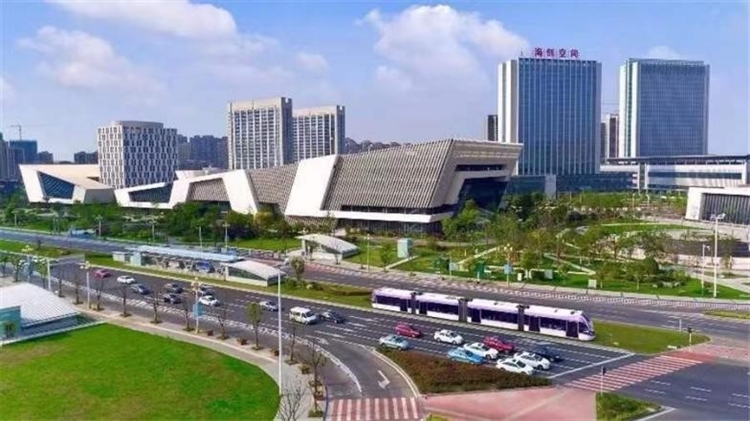
1、Integrated Operation and Maintenance
The Intelligent Operation & Maintenance System is an integrated smart operation & maintenance system achieving such functions as self-diagnosis of key system & equipment faults, remote centralized monitoring, integrated decision by an expert system, fault prediction, health system, emergency commanding, etc. to improve safety service level and management efficiency, and to reduce labor intensity, skill requirements and operational cost.
The system is characterized as "one platform, two layers, three kinds of terminals, and four centers", that is, the system breaks through traditional operation & maintenance monitoring, makes use of time & space big data and cloud platform technologies, supports two layers, line network and lines, and fulfills four major central tasks of monitoring, analysis, emergency, and health through display by PCs, projectors, and mobile terminals.
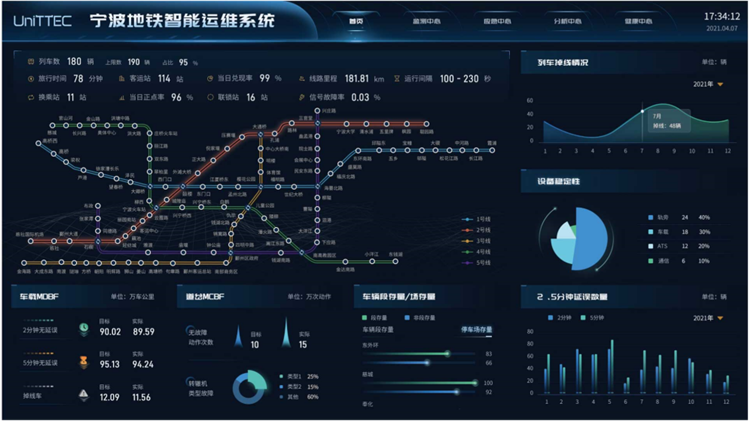
2、Smart Work
The Smart Work Platform based on the BIM regards "safety, science & technology, intelligence, environmental protection" as the core concept, and makes comprehensive use of such technical means as Internet, Internet of Things, big data, and cloud computation, etc. to implement global supervision and control of safety production on work sites starting from three major safety hazards of “unsafe human behaviors, unsafe material status, and unsafe environmental factors”.

3、Security System Integration
Around two systems including safe production operation and emergency response commanding, four core capacities are constructed, namely, prevention, rescue, administration, and control through data integration and process restructuring by means of big data, AI, VR, Internet of Things, and other technologies with metro electromechanical equipment as the nerve ending and supervision apparatuses as smart eyes, to realize digitalized security and three-dimensional operation. This is done to provide support and guarantee for metro authority and emergency management bureaus to cope with emergencies and greatly improve the overall safety level of metros.
Typical scenarios
Scene 1: Entrance and exit gatekeeper - Building up figure portraits
Based on the principle of entry-and-exit balance, a passenger portrait is constructed through four key points, namely, metro station, security gate, entrance and exit gate, and ticket vending machine around people, things and the environment from the two ends of control; advanced warning is realized through accurate multi-label customer portrait management, integrating certificates, tickets, and people.

Scenario 2: Driving partner - Regulating driving behavior
A carriage is a closed space, the use of scientific and technological means, is a safe and effective means of control, and also the basic requirement of customer service. Real-time information can be collected through cameras, hearing aids and other equipment to effectively master abnormal situations and passenger flow changes in the carriage to provide data support for safety precaution.
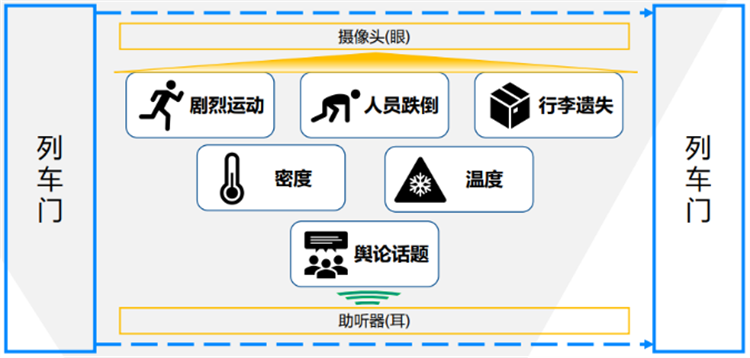
Scene 3: Tunnel friends - Sensing the driving environment
By use of sound, brightness, temperature, humidity, concentration, wind speed, ground surface, water level, and clearance sensors, etc., senses of "smell" and "touch" are built up for the metro tunnel to establish portraits of tunnel security from perspectives of "structural damage", "foreign invasion", and "tunnel environment".

Scenario 4: Electronic police - Ensuring operational order
Metro stations are divided into public and non-public areas. Through video analysis technology, integrated capacity of "civil air defense" and "technical defense" is generated from such analysis models of diversified dimensions of location, behavior, and density to quickly identify suspicious behaviors and maintain normal order.









 浙公网安备33010802004479号
浙公网安备33010802004479号